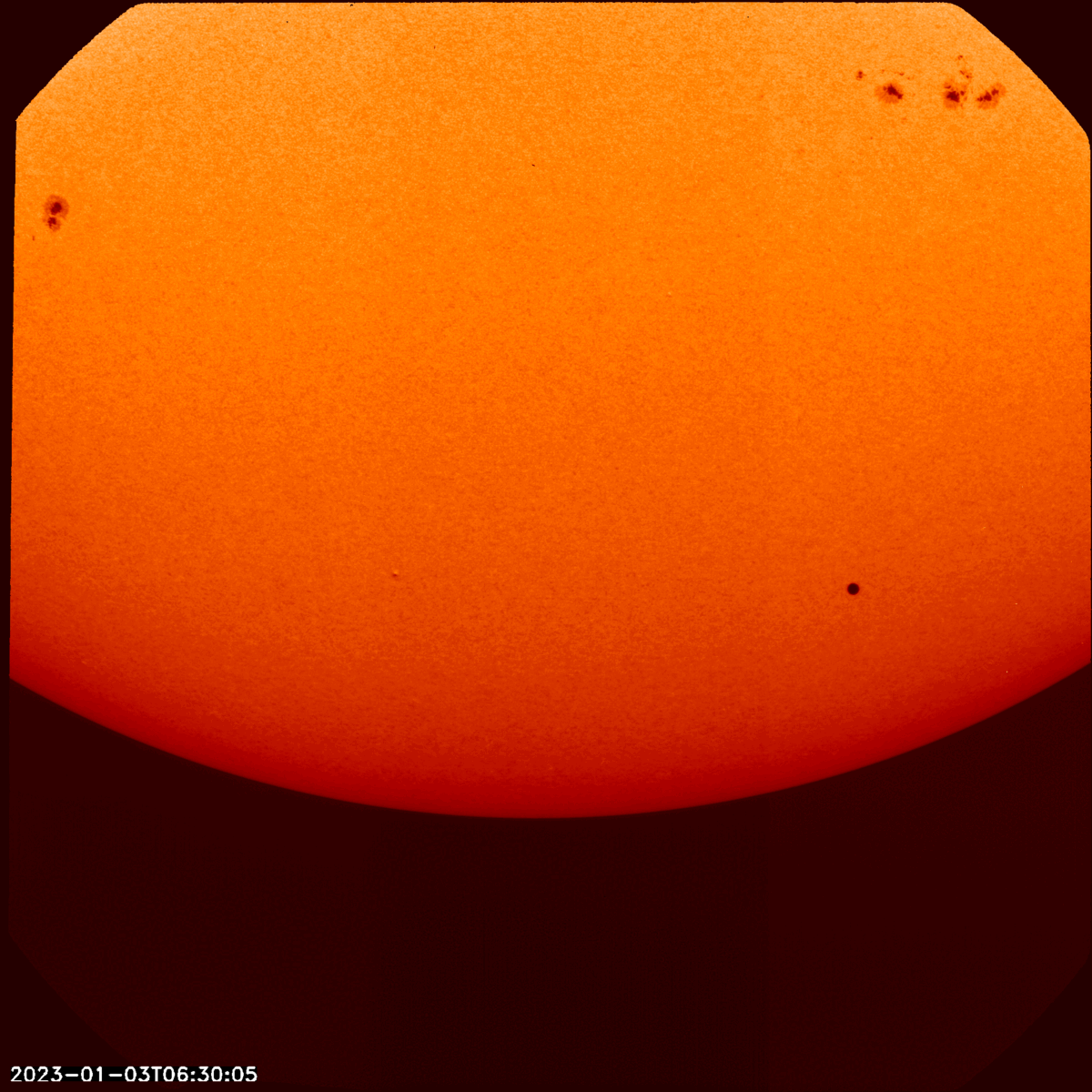The European Space Agency has published several images and videos taken by the Solar Orbiter probe. It filmed the transit of Mercury on the disk of the Sun.
Transit of Mercury through the eyes of Solar Orbiter
Mercury transits are quite rare for us. On average, about a dozen such events per century can be seen from Earth. However, space missions studying the Sun see them much more often.

One of these missions is the European-American Solar Orbiter. On January 3, 2023, it observed the transit of Mercury. Mission specialists took advantage of this opportunity to calibrate the probe’s scientific instruments.
In the images of the PHI camera, Mercury appears as a black circle in the lower right part of the solar disk. It is noticeably different from the usual sunspots at the top of the image.
By combining the images of the EUI ultraviolet camera, astronomers created a timelapse showing Mercury at the moment when it had already “descended” from the solar disk, but was still against the background of structures in the upper layers of the star’s atmosphere. And finally, the images of the SPICE instrument demonstrate the planet against the background of radiation emitted by various substances in the composition of the Sun.
Importance of transits
In the past, astronomers used transits to determine the size of the Solar System. Observers in different parts of the globe recorded the exact time of the beginning of the event. Further, knowing the distance between them and the time difference, astronomers calculated the distance to the Sun using trigonometric methods.
Currently, transit detection is the most effective way to search for exoplanets. About 80% of all currently known extrasolar worlds have been found using this method.
According to https://www.esa.int
Follow us on Twitter to get the most interesting space news in time
https://twitter.com/ust_magazine
